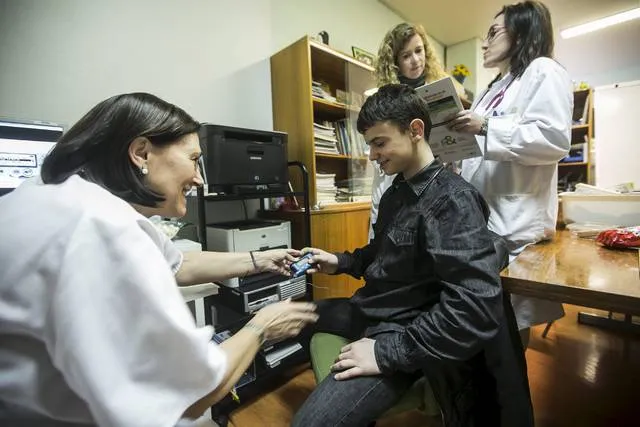Experts warn that, probably, the 120,000 current diabetics will double more than a decade.
The increase, he explains, has been gradually.% of the inhabitants who suffer from it do not know.
Those over 70 constitute the most affected society sector."About 25% of these people have diabetes, especially type 2; that which, unlike type 1, is not caused by the individual's own immune system, but is due to other factors -mala feeding,Lack of physical exercise, and overweight and obesity.
However, Ana Belén Mañas, an attached specialist of the Department of Endocrinology and Nutrition of the Zaragoza Clinical Hospital, notes that those responsible for the "large majority" of the cases of diabetes are.
"This anomaly appears in many people with overweight and obesity because fat, especially abdominal, prevents the correct action of insulin, which, segregated by the pancreas, is the hormone responsible for introducing glucose into the cells," he says.Thus, the substance accumulates in the blood and the person reaches higher than normal sugar.
In this way, the increase in diabetes cases in the community is closely linked to those of overweight and obesity, which have increased "very accentuated" in recent times."At the end of the 90s, 45% of men and 33% of women suffered obesity, while now the figures have reached 60.7% and 45%, respectively," says Mañas, whilewarns of the dangers that this disease supposes.
"70% of the annual amputations practiced in Spain - especially fingers and legs - are made to diabetic people," he says, adds that the condition of blindness and infarcts is a constant in those people who suffer from the disease without knowing it,since "it does not hurt."
Therefore, he advises to undergo medical review every 6 months, in addition to following a Mediterranean diet and walking a minimum of one hour daily."Only with those simple guidelines could be avoided up to 70% of the cases of type 2 diabetes," he says.
About 1,700 euros per year per diabetic
The increase in cases of affected could involve one of the largest health expenses in the community, since, according to Mañas, direct costs- medical assistance and pharmacological treatment- by diabetic and year ascend to 1,700 euros.
This amount reveals that, at present, the Aragon Government allocates around 204 million euros to the treatment of these patients and that, in case of continuing the current increase in, spending in 2030 could reach 408 million euros.


